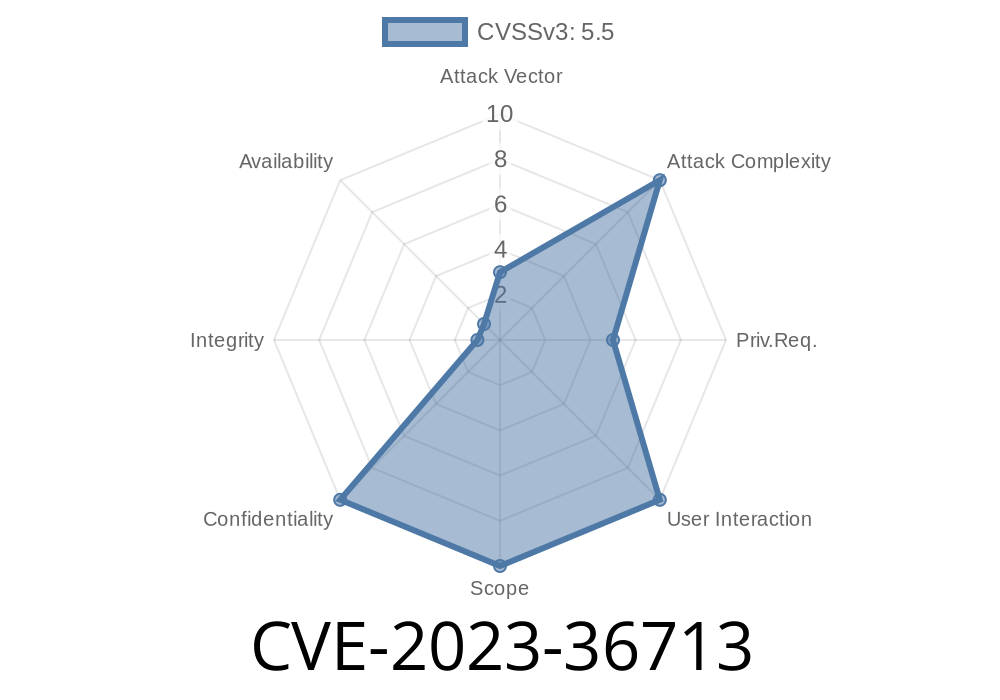Security researchers recently discovered a vulnerability in the Windows Common Log File System (CLFS) driver, which can allow an attacker to obtain sensitive information from the compromised system. Dubbed CVE-2023-36713, this latest vulnerability can potentially affect millions of Windows users worldwide. In this long-read post, we will discuss in detail the nature of the vulnerability, the exploit method used by attackers, its implications, and how to protect your system from such threats. Additionally, we will share original sources, provide code snippets, and explore recommendations by experts.
Understanding the Vulnerability
Windows CLFS driver is responsible for managing log file data and performing various log operations in a system. The vulnerability lies in the way CLFS driver fails to properly initialize certain memory content that eventually leads to information disclosure. The information exposed could be private user data or sensitive system information, which could be exploited by an attacker to further compromise the targeted system. Microsoft assigned CVE-2023-36713 to this vulnerability, and it has been categorized as an information disclosure vulnerability.
Exploiting the Vulnerability
To exploit the vulnerability, an attacker needs to have local access to the targeted system and execute a specially crafted application. Once the application is executed, it leverages the improper memory initialization within the CLFS driver and retrieves the sensitive information from the system. The exploit does not require any specific skill set, and anyone with basic programming knowledge can potentially exploit the vulnerability using a simple code snippet.
Exploit Code Snippet Example
#include <windows.h>
int main(void) {
HANDLE hFile = CreateFile(L"\\\\.\\GLOBALROOT\\Device\\ClfsControl",
GENERIC_READ | GENERIC_WRITE,
FILE_SHARE_READ | FILE_SHARE_WRITE,
NULL,
OPEN_EXISTING,
,
NULL);
if (hFile != INVALID_HANDLE_VALUE) {
UCHAR buffer[500];
DWORD bytesReturned;
if (DeviceIoControl(hFile,
SOME_CLFS_IOC_CODE, // Replace with a valid IOCTL code
NULL,
,
&buffer,
sizeof(buffer),
&bytesReturned,
NULL)) {
// Process the leaked information in buffer
// ...
}
CloseHandle(hFile);
}
return ;
}
Please note that the presented code is intentionally simplified to provide an understanding of exploiting the vulnerability and should not be used for malicious purposes.
Original References and Further Reading
1. Microsoft Security Guidance: CVE-2023-36713
2. Common Vulnerabilities and Exposures Database: CVE-2023-36713
3. National Vulnerability Database (NVD) Detail
Mitigating the Risk
Windows users can mitigate the risk by applying the security update released by Microsoft that addresses the CVE-2023-36713 vulnerability. To update your system, follow these steps:
Restart your computer to complete the process.
Moreover, it is always recommended to follow standard security practices such as keeping your operating system and software updated, using strong antivirus protection, and being cautious when downloading and executing files from untrusted sources.
Conclusion
CVE-2023-36713 is a serious information disclosure vulnerability that can put millions of users at risk. Understanding and mitigating the risk are crucial in ensuring the security and privacy of your system. By staying informed and following recommended security practices, you can minimize the chances of being vulnerable to this and similar threats.
Timeline
Published on: 10/10/2023 18:15:16 UTC
Last modified on: 10/13/2023 20:19:00 UTC
